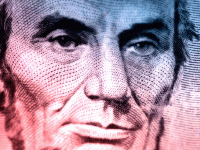What Teachers Can Learn From Lincoln
Although he was a president, Abraham Lincoln’s life provides some powerful lessons for teachers: demonstrating restraint, building trust, and the power of predictability and presence.
Your content has been saved!
Go to My Saved Content.He presided over the most tumultuous period in United States history, blazed a path for freedom and human dignity, and shaped a new vision for a still-young union. Even now, 151 years after his death, Abraham Lincoln looms larger than life, a man who, according to former British prime minister David Lloyd George, "was such a giant figure that he loses his nationality in death." What can 21st-century educators learn from a 19th-century president?
That is the subject of Harvey Alvy and Pamela Robbins' thoughtful book, Learning from Lincoln, a study of leadership practices that educators can glean from the life of our 16th president. Lincoln's artful but painful career in public service is distilled into lessons on honing emotional intelligence and empathy; communicating with clarity and conviction; and implementing and sustaining a personal vision. Through an analysis of pivotal events in his presidency as well as his public and private pronouncements, the authors reveal a side of Lincoln that educators would do well to emulate within and beyond the classroom. Here are some of my favorites:
Demonstrating Restraint
Great educators know how to do the right thing, at the right time, in the right way. That’s not just an instructional credo, but a mantra for dealing with difficult situations -- uncooperative students, miscalculating supervisors, incorrigible parents.
Lincoln dealt with a long line of people, adversaries and supporters alike, who at some point or another managed to personally disparage, disappoint, or disillusion him. Lincoln took to writing his enemies long missives in which he blasted them for their foolishness, hubris, and unmitigated lack of effort. He folded these letters into envelopes, signed and stamped each one, and then buried them in a drawer, never again to touch the light of day or a postmaster's delivery wagon. Following the Battle of Gettysburg, believing that his own General Meade could have crippled the Confederate army by pursuing Lee's vanquished troops, Lincoln composed a heated letter to Meade:
Building Trust
Lincolnesque educators trust their students and get their students to trust one another. That trust is built on shared expectations and common values that dictate everyday interactions. It is based on the belief that an ethos of personal responsibility is more powerful than a culture of fear and repercussion. Teachers who successfully foster this culture of trust can be assured that their students will do right, even when they aren’t looking. For example, following a meeting that ran overtime, I returned to class nearly ten minutes after the students had re-entered the room from recess. But instead of seeing a classroom in chaos, I found students busily at work on a long-term project that they kept on standby. That's trust forged from personal responsibility. A similar process unfolds every time students work in collaborative groups with only intermittent contact from the teacher. There’s a measure of trust that hangs in the air, a shared belief that students will rise to claim a better version of themselves if the teacher shows them how to reach it.
Trust and loyalty mattered deeply to Lincoln, especially to those closest to him. On February 11, 1861, Lincoln departed from Springfield for Washington to assume the presidency in March. He had moved to Springfield in 1837, at the formative age of 28. Twenty-four years later, as he prepared to leave his adopted hometown, unsure of his return, he declared:
The Power of Predictability and Presence
Throughout his presidency, Lincoln stuck to a fairly regimented schedule. He arose at 6AM each morning and ate a breakfast of coffee and eggs, read new summaries prepared by his secretaries, and then reviewed and signed documents and memos until 10AM. He held cabinet meetings twice a week, on Tuesdays and Thursdays, usually in the mid-afternoon. At 4PM, a carriage pulled up to the White House portico to take the president and first lady for drive and a brief respite from the daily grind of politics. Beyond the predictability of his schedule, Lincoln sought to create a public presence and air of accessibility for constituents. Every morning during his first year in office, Lincoln made himself available for what he called "public opinion baths," an open forum for citizens to ask about his policies, challenge him on his positions, or convey to him their concerns. Lincoln's aides, most notably his chief of staff John Hay, objected to these unwieldy encounters, filled often by autograph seekers or well wishers. But Lincoln felt adamant that he remain visible and accessible to the people.
Teachers hold a different type of public office, but they are no less accountable to their constituents. In the course of a day, teachers interact with students, dialogue with parents, collaborate with colleagues, and report to supervisors. They set learning agendas, define performance goals, and monitor progress. Learning that is predictable is not necessarily rigid or impervious to innovation. Predictability -- in classroom expectations, learning designs, and measures of learning -- can actually provide the type of stability that leads to productivity and growth. And when teachers communicate student achievement -- or, in today's digital landscape, construct online portals that make learning universal -- they are following Lincoln’s example of creating a public presence that draws people in.
Schools will be closed on Monday, February 15, in observance of Presidents' Day, which officially marks the birthday of George Washington but arrives just days after Lincoln's own birthday. When teachers re-enter their classrooms the following Tuesday, they would do well to recall the lessons from a president who stands as large today as he did then.
